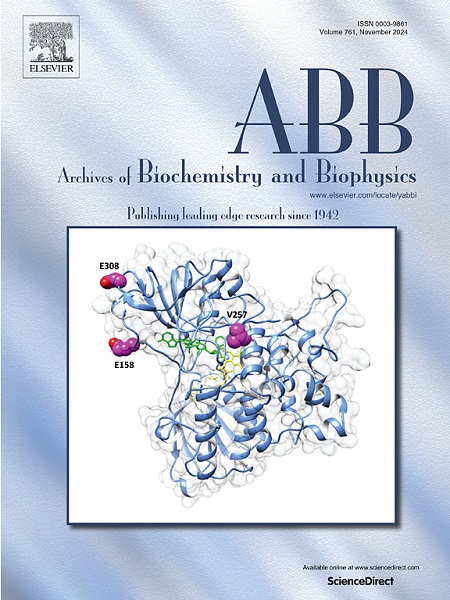Wnt3a-induced LRP6 phosphorylation enhances osteoblast differentiation to alleviate osteoporosis through activation of mTORC1/β-catenin signaling
IF 3.8
3区 生物学
Q2 BIOCHEMISTRY & MOLECULAR BIOLOGY
引用次数: 0
Abstract
Objective
Osteoporosis (OP) is a common cause of morbidity and mortality in older individuals. The importance of Wnt3a in osteogenic activity and bone tissue homeostasis is well known. Here, we explored the possible molecular mechanism by which Wnt3a mediates the LRP6/mTORC1/β-catenin axis to regulate osteoblast differentiation in OP.
Methods
OP-related key genes were identified through a bioinformatics analysis. A ROS17/2.8 cell differentiation system for rat osteogenic progenitors and a rat model of senile OP were constructed for in vitro and in vivo mechanism verification.
Results
Bioinformatics analysis revealed that LRP6 was poorly expressed in OP and may play a key role in the occurrence of OP by affecting osteoblast differentiation. LRP6 knockdown inhibited osteoblast differentiation in an in vitro model. In addition, Wnt3a promoted osteoblast differentiation by inducing LRP6 phosphorylation. Moreover, LRP6 promoted mTORC1 expression, which indirectly promoted β-catenin expression, thus promoting osteoblast differentiation. Finally, an in vivo assay revealed that LRP6 inhibition improved OP.
Conclusion
Our study provides evidence that Wnt3a induces phosphorylation of LRP6 to activate the mTORC1/β-catenin axis, thus promoting osteoblast differentiation and ultimately improving OP in aged rats.
Wnt3a诱导的LRP6磷酸化可通过激活mTORC1/β-catenin信号增强成骨细胞分化,从而缓解骨质疏松症。
目的:骨质疏松症(OP)是老年人发病和死亡的常见原因。众所周知,Wnt3a 在成骨活性和骨组织稳态中具有重要作用。在此,我们探讨了Wnt3a介导LRP6/mTORC1/β-catenin轴调节OP中成骨细胞分化的可能分子机制:方法:通过生物信息学分析确定了与OP相关的关键基因。方法:通过生物信息学分析确定了 OP 相关的关键基因,构建了大鼠成骨祖细胞的 ROS17/2.8 细胞分化系统和老年 OP 大鼠模型,用于体外和体内机制验证:生物信息学分析发现,LRP6在OP中低表达,可能通过影响成骨细胞分化在OP的发生中起关键作用。在体外模型中,敲除 LRP6 可抑制成骨细胞分化。此外,Wnt3a通过诱导LRP6磷酸化促进成骨细胞分化。此外,LRP6 促进了 mTORC1 的表达,而 mTORC1 间接促进了 β-catenin 的表达,从而促进了成骨细胞的分化。最后,体内试验显示,抑制 LRP6 可改善 OP:我们的研究为 Wnt3a 诱导 LRP6 磷酸化以激活 mTORC1/β-catenin 轴提供了证据,从而促进成骨细胞分化并最终改善老年大鼠的 OP。
本文章由计算机程序翻译,如有差异,请以英文原文为准。
求助全文
约1分钟内获得全文
求助全文
来源期刊

Archives of biochemistry and biophysics
生物-生化与分子生物学
CiteScore
7.40
自引率
0.00%
发文量
245
审稿时长
26 days
期刊介绍:
Archives of Biochemistry and Biophysics publishes quality original articles and reviews in the developing areas of biochemistry and biophysics.
Research Areas Include:
• Enzyme and protein structure, function, regulation. Folding, turnover, and post-translational processing
• Biological oxidations, free radical reactions, redox signaling, oxygenases, P450 reactions
• Signal transduction, receptors, membrane transport, intracellular signals. Cellular and integrated metabolism.
 求助内容:
求助内容: 应助结果提醒方式:
应助结果提醒方式:


